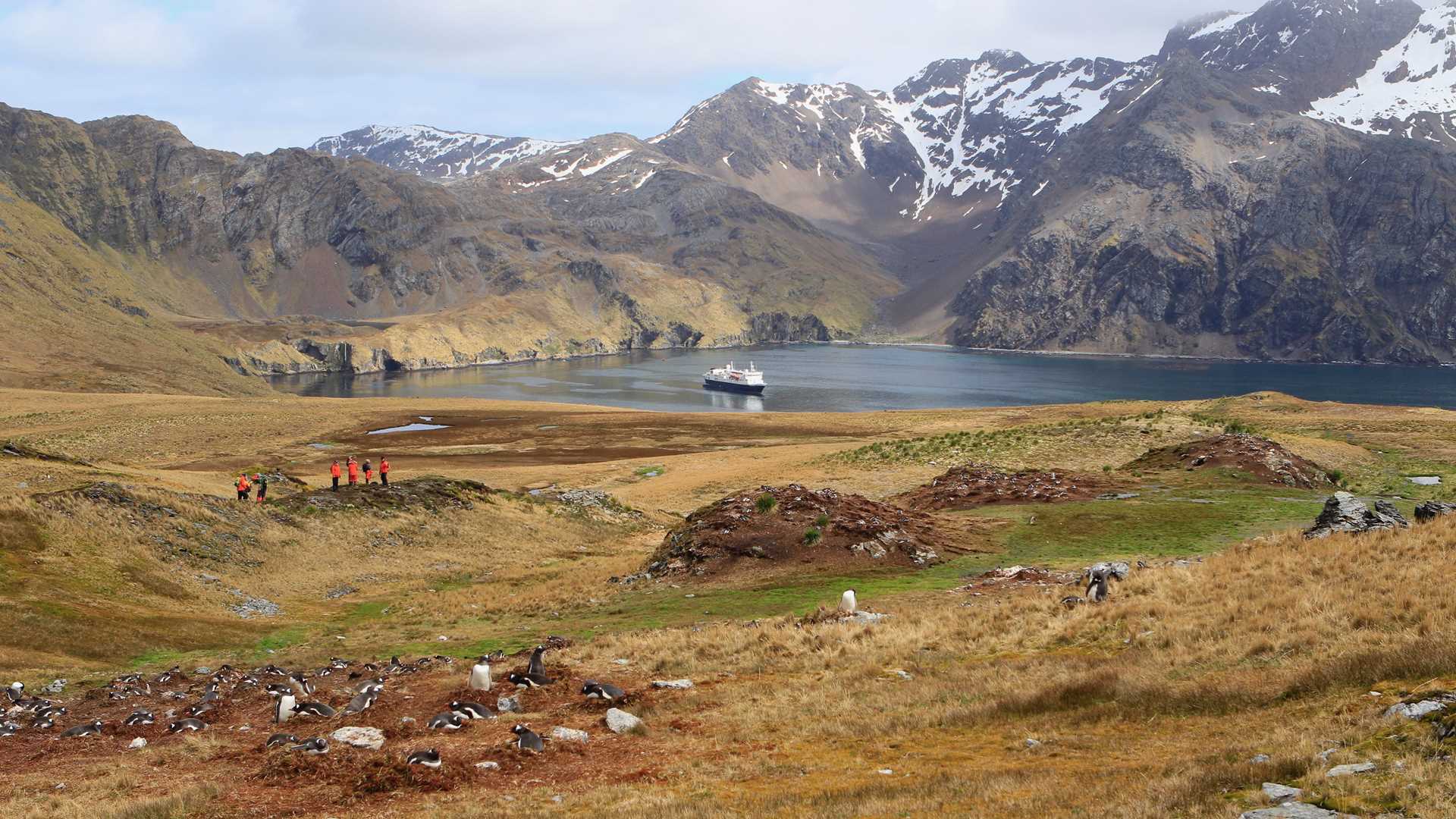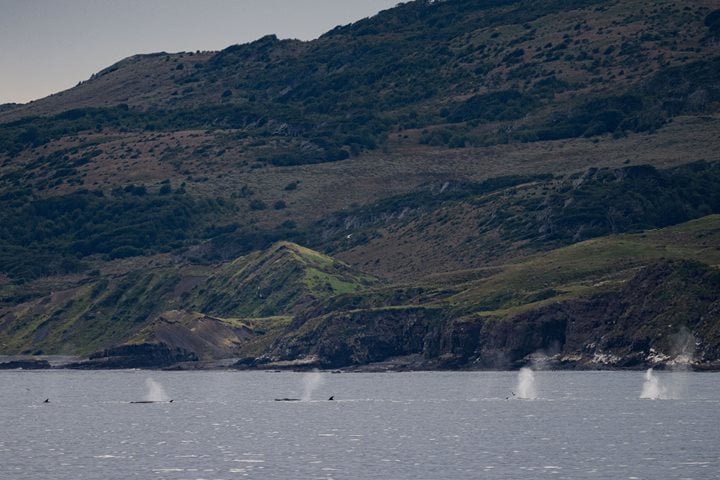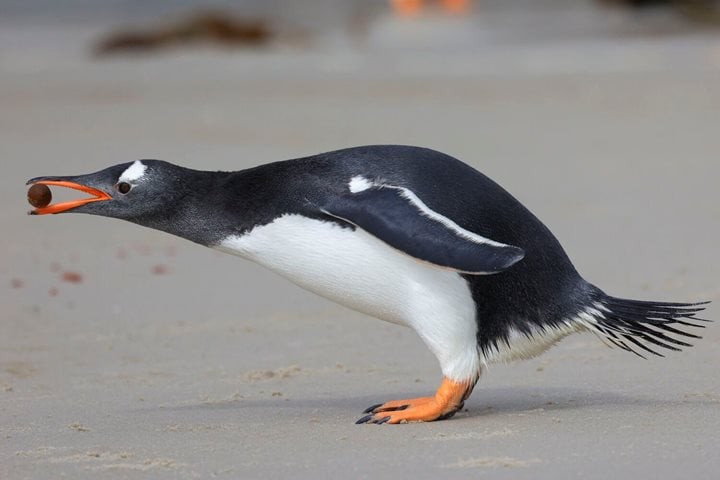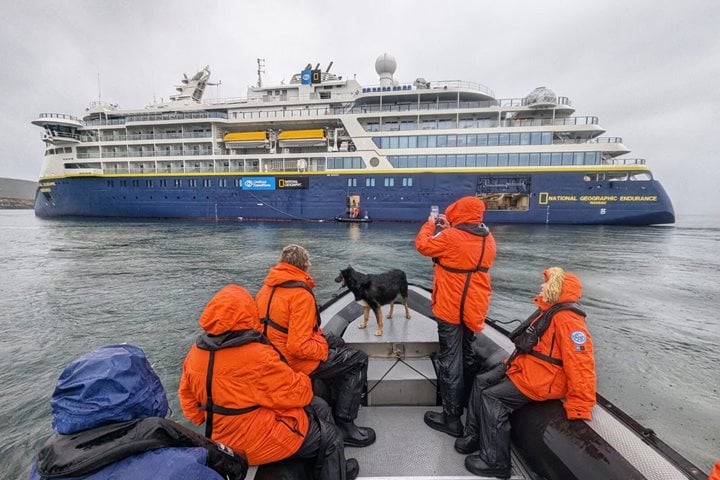This morning the National Geographic Explorer woke up on the hook in Jason Harbor in Cumberland Bay to an absolutely stunning day. The Allardyce Range was in full sun and as we pulled away from our anchorage we were exposed for the first time to the rugged nature of the mountains, which make this island in the Subantarctic so dramatic. Continuing down the coast we pulled into Godthul (meaning Good Cove in Norwegian) and pursued our preference either on foot or Zodiac. At the landing, we encountered evidence of bygone whaling days and the remnants of the floating factories that operated in Godthul from 1908-1928. As we negotiated our way up through the tussock we encountered the occasional snarl of the fur seal and were glad when we got out of the thick grass for ease of walking and absence of the eared seal with a territorial disposition. As we emerged to more open country we discovered evidence of reindeer that have since been eradicated. In 1911, ten animals were introduced to nearby Ocean Harbor on the Barff Peninsula as a reminder of home for the Norwegian whalers and for hunting. Unfortunately the three reindeer introductions on South Georgia were in some of the most biologically productive areas and by 2000 it was realized that the reindeer must go. After eradications in 2013 and 2014 the reindeer, like the rats, are considered to no longer be present, albeit the monitoring continues. Climbing further up, the hikers had incredible views of the surroundings (and gentoo penguins) while those in Zodiacs enjoyed the incredibly rich shoreline of Godthul.
After lunch we had the opportunity to explore the whaling station of Grytviken (active from 1904-1964). Once home to 450 (mostly Norwegian) whalers it was humbling to see the evidence of whaling on an industrial scale and to learn more about life at one of the seven stations on the island. After exploring the grounds and visiting the incredible museum we headed down the shoreline to the whaler’s graveyard where Ernest Shackleton is buried. Shackleton died of a massive heart attack at age 47 in Grytviken on January 5, 1922. After reading Endurance it was a moving experience to be able to toast “The Boss” in a place that was very near to his heart and experiences in the Antarctic. While in many respects the Quest expedition should not have been, it provided a fitting end to a heroic story.









